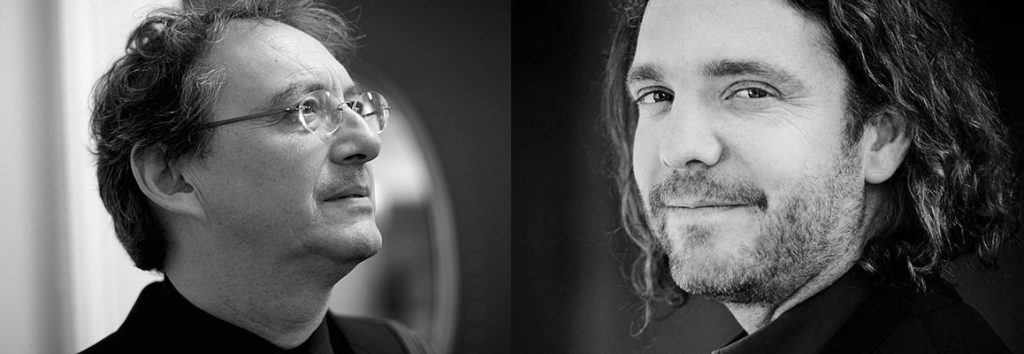Sometime in the early 1600s — the chronology is decidedly sketchy — German composer and organist Hieronymus Praetorius wrote his Magnificat V, one in a series of Magnificat settings for multiple voices all arranged in towering polyphony. Almost 400 years later, contemporary Estonian symphonist Arvo Pärt blended the intricate Renaissance form with elements of Gregorian chant and Russian Orthodox harmony to create a uniquely reshaped Magnificat, stark, solemn, strikingly reverent.
What surprises is not so much the breadth of the historical gulf separating the two works, but the depth of resonance that unites them, a shared sense of acute spirituality expressed in vivid human overtones.
Presenting both pieces, the first foreshadowing the second, internationally acclaimed period virtuosi, the Tallis Scholars, led by Peter Phillips launched a dazzling evening of sacred music at St. Paul’s Basilica on Saturday. A vibrant choral sampler, the lush offerings essentially reflected parallel modes of expression over the centuries revealed in four distinct Christian texts. Alternating with Phillips as conductor, University of Toronto Head of Historical Performance, renowned countertenor Daniel Taylor, joined by artists of the Choir of the Theatre of Early Music augmented and expanded the repertoire in a glorious demonstration of exquisitely detailed programming.
Opening with the twinned Magnificats with their soaring double choirs, the initial supercharged atmosphere gently gave way to a more intimate dynamic with a closely observed reading of five discrete renderings of Pater Noster. John Sheppard’s serene 16th century prayer in English echoed by 20th century John Tavener’s soft spoken, sweetly lilting version startlingly contrasted with Igor Stravinsky’s dramatic Slavic chant. Returning to the Renaissance, the Tallis Scholars took flight with Palestrina’s gloriously uplifted anthem ending the sequence with a less known setting rich in gilded cadences by East European-born Jacobus Gallus.
More finely filigreed singing was much in evidence post intermission with four variants of Ave Maria, the first performed in a single appearance by members of U of T Faculty of Music’s Schola Cantorum led by Taylor. Theatrically assembled in two ranks flanking St. Paul’s great domed Victorian nave, the visibly excited cohort of student choristers gave rich balanced voice to a heartfelt rendition of the hallowed plea written by an anonymous author. Returning to the chancel, Phillips and choir followed, summoning Jean Mouton’s gorgeous flowing motet circa 1600. Two updated Ave Marias concluded the sequence, a tender hymn by Stravinsky and an unexpectedly rollicking tribute to the Virgin, Pärt’s euphoric Bogoróditse Déjo (Hail Mary).
An extended Reformation motet, Maria walit zum Heiligtum (“Mary made a pilgrimage to the temple”) by Johannes Eccart, as narratively dramatic as it was worshipful, further underscored the Virgin Mary motif so prominent in part two of the concert.
The Nunc Dimittis, an exultant proclamation of the birth of the Infant Jesus, concluded the evening in historically varied guise. A quasi madrigal written in glowing counterpoint by Orlando Gibbons. A short work by Spanish polyphonist Andrés de Torrentes. A spectacular swelling iteration for double choir by the brilliant 20th century orchestral colourist, Gustav Holst.
The Tallis Scholars ended as magnificently as they had begun, utterly triumphant, gifting us with Claudio Monteverdi’s irrepressibly joyful motet, Cantate Domino by way of an encore.
This was a concert of extraordinary dimensions, a spine tingling leap across time, astutely curated, superbly sung, stirring and intense. In this, the holiest season in the Christian calendar, Phillips, Taylor and artists remind us that music like faith can be powerfully transformative.


